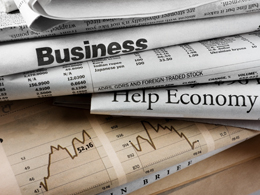Avoiding the Traffic Jam in High-Dividend Stocks
Many investors are seeking safety in higher-yielding dividend stocks. But what if they all change their minds at once? We think there are better ways to invest in equities without getting stuck in a traffic jam.
The hunt for yield and safety stocks continues to captivate investors. Of the nearly 2,700 US equity mutual funds and ETFs, investors have poured money into less than 20%—those with the highest yields. The rest have seen outflows.
But the highest-dividend-paying stocks are trading at valuations that are about 85% higher than their historical average (Display, left chart). Investors seem willing to pay a hefty premium for companies offering high current yields, over firms that can grow dividends over time.

The Illusion of Safety
High-dividend payers are popular because they are generally seen as stocks that act like bonds. Yet with so many investors and investment flows heading in the same direction, the perception of safety may be an illusion. In fact, we believe that if this trade reverses, it will increase the odds of some nasty portfolio “fender benders,” as some widely held names might come crashing down to reality from elevated valuations.
This is exactly what we saw in equity markets just three years ago. Back in 2013, as concerns mounted that the US Federal Reserve would begin to ease its bond purchases, equity markets sold off in the downturn widely known as the “taper tantrum.”
Remember the Taper Tantrum
Memories are short in markets. In the year before the taper tantrum, the S&P High Yield Dividend Aristocrats Index, a proxy for the highest-yielding stocks, outperformed the broader market by about 4% (Display above, right chart). But one year after the Fed started to change course, this index lagged the S&P 500 Index by nearly 5%.
Equity market history is littered with similar examples. When investors venture into market segments with stretched returns, the hangover can be dramatic. Often, surging popularity for a sector can lead to a high concentration in typical indexes that are weighted by market capitalization. In other words, as stocks and sectors become more expensive, their weight in the index grows.
Growth and Profitability Are Inexpensive
In a low-growth world, we would expect investors to pay a higher premium for companies with solid earnings growth and high profitability. It turns out that the opposite is the case. In fact, the most profitable companies today are trading near all-time lows relative to the market. We have only seen distortions like this twice over the last four decades—in 2000–2002 and 2008‒2009 (Display).

Focusing on Fundamentals Is Key
Of course, there are companies to be found with attractive and growing dividend yields as well as solid growth prospects and return potential. But to find them, it’s important to be selective and keep three guidelines in mind:
- Low rates matter: Companies that can continue to grow—even modestly—in a zero-rate world are especially attractive candidates today.
- Bond-proxy stocks aren’t risk free: While it seems that rates will remain lower for longer, Fed policy could change quickly. If that happens, owning companies that benefit from improving global growth could be more rewarding than being concentrated in bond-proxy stocks.
- High-quality growth is more durable than “pay-me-now” stocks: Some high-quality growth companies with moderate yields and low payout ratios produce strong earnings and dividend growth—which should generate more future income. On the other hand, high-current-yield stocks, with high payout ratios and potentially weak balance sheets, may be unable to grow their dividends, or even maintain current levels.
Singling out dividend yield as a priority for building a portfolio that can withstand volatility is actually a risky strategy, in our view. In today’s market, we believe a selective, active approach, focused on company fundamentals, growth and profitability, is a more compelling way to construct an equity portfolio given continued market uncertainty. And it’s a great way to avoid the traffic that’s likely to develop when high-dividend stocks are no longer in favor.
The views expressed herein do not constitute research, investment advice or trade recommendations and do not necessarily represent the views of all AB portfolio-management teams.
Copyright ©














